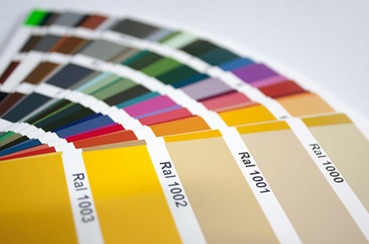
What do you do when the paint on the walls looks dingy, or you are ready for a change? Interior painting in Concord is a relatively quick and cost-effective solution when you want to change the appearance and mood of your living spaces.
However, your interior painting project will be a successful one if you know the secrets to it. Unfortunately, it is very easy to do things poorly. Doing the job right requires care and proper technique, usually aided by experience.
Preparing the surface
The first step to interior painting is preparation. Professional house painters know that the secret of every successful painting project is correct and thorough surface prep work. This is something not all DIY painters do. Or they skip this step and go straight to painting the walls.
Surface prep work consumes much time and effort in any painting project. But look at the following situations that might happen if the surfaces are not prepared or inadequately prepared:
- Adhesion failure or delamination – This is where the paint delaminates from the substrate underneath.
- Flaking or peeling – This is where the paint flakes or peels from the substrate.
- Blistering – Another paint failure is blistering, characterized by bubble-like spots. Soluble salts and the entrapment of moisture usually cause this.
- Cissing – Cissing is caused by surface contamination, typically moisture, oil, grease, wax, or silicones. It occurs after freshly applied paint recedes from the surface, leaving some small “dimples” on the surface.
To avoid these defects in your paint job, properly prepare your interior walls before painting them.
Prep work is more than cleaning and repairing interior walls before painting them. It also involves preparing the entire space for painting. Follow these steps to ensure your area is ready for the fresh coat of paint:
- Move everything out of the room you wish to paint, making the whole job a little easier. This includes removing doors, light fixtures, hardware, outlet covers, etc. It is wise to label everything so you can return it to its proper place when you finish the job.
- You want to paint the walls, not the floors or furniture, so cover everything remaining in the room. Use a good quality drop cloth made of canvas or plastic. Remember that plastic sheets are slippery and will catch paint but not absorb it. Thin cloths such as bed sheets will let paint seep through, so they do not make good drop cloths for your interior painting job.
- Make any repairs needed on the walls. Things to be addressed are water damage, flaking or peeling paint, problems with the drywall, plaster, or whatever is under it, and cracks, lines, or nail holes. Some of these may have resulted from old wallpaper or previous paint jobs.
- You can easily find blemishes on the walls that need repair by holding a lamp with a bare bulb near the wall. This will highlight any imperfections. Running your hand flat over the wall may also turn up areas needing repair.
- Sanding the walls removes any old paint and gives an excellent surface to help the new paint adhere. To sand trim, use a sandpaper sponge that will fit itself to the curves and edges of the trim. Be sure to wash the walls after sanding since painting over dust leaves a texture on your wall that you may not want. Use TSP (trisodium phosphate) or something similar for the best results. If your walls have smoke stains, remove them with 50/50 bleach and water. Use two buckets when you wash, one with cleaner and one with clear water. Use the clear water to rinse your sponge or rag each time to capture the dust and dirt before going back into the cleaner for the next section. Let the walls dry first before proceeding to the next step.
- For best results, it is best to prime and then paint. Especially for previously painted surfaces that are also patched, priming is necessary to cover the patched areas adequately.
Choosing the best paints
Another element of a successful interior paint job is using the best paints. So, don’t settle for cheap paints because you think you will save money. Yes, initially – but it can cost you a lot more down the line.
That’s because cheap paints have inferior quality and can you do more harm than good. These paints can cause various surface defects ranging from fading to cracking, putting all your good prepping efforts to waste. You don’t wish to paint again to fix these defects by using cheap paints. It would also mean unexpected expenses and extra time you may not have to spend.
Drywall is by far the most common interior wall and ceiling material for most homes in the United States. There are a handful of paints you can use with confidence, but some paints may work better than others to achieve different results. Therefore, it is essential to know your needs before choosing the paint type for your drywall.
Here are the several paint options you can apply for your drywall:
- Latex paint – Latex paints are still the most popular option for interior walls and ceilings. Flexible and durable, latex paints are also the most environmentally viable option as they emit fewer volatile organic compounds (VOCs), making them safe and comfortable to work with. They are also easier to clean with soap and water.
- Acrylic paint – Like latex paint, acrylic paint is a water-based paint. It’s also flexible, durable, and low in VOCs like latex. The difference is that acrylic paint contains more acrylic polymers than latex paint, making it more durable (and thus more expensive). Like latex, acrylic paint is easier to clean with soap and water. You won’t have to worry about damaging your paint job if a mistake is made.
- Masonry paint – You may be surprised to find masonry paint on this list. While masonry paint is purposefully designed for exterior walls, you can apply it on your drywall. This paint is very thick, making it ideal for preventing cracks, reducing wear and tear, and protecting your interior walls from pollution. But as masonry paint is very thick, it can be challenging to apply it evenly. Also, masonry paint takes longer to dry, so be patient when using it.
However, masonry paint pays off with its durability. It resists mold and mildew, so if you paint your kitchen, bathroom, laundry room, basement, or other areas subject to moisture, masonry paint is a great choice.
- Enamel paint – Enamel paint is another unlikely option for drywall, but it provides durability and a glossy finish. It is also resistant to stains and moisture, so don’t worry about your walls getting scruffy. You can use enamel paint for walls and cabinets in the kitchen or bathroom, hallways, and entryways. However enamel paint can be challenging to work with, but it’s worth the effort because of the benefits mentioned above.
Paint application
Another factor of a successful paint job is the correct application of paint.
Use enough paint so your brush or roller is full but not drip. Paint trim from the top down to prevent dust or dirt from shifting upward. If you do the trim before the walls, you don’t have to worry about getting a little trim paint on the wall, as you can paint over it. Assign help to another person if you can, so one can cut in while the other uses the roller while the cut-in area is still wet.
Getting your interior painting in Concord just right is simple but challenging. You can do it yourself or hire a professional painting company, like Custom Painting, Inc., to handle all the details. Either way, you can have a successful interior paint job.

